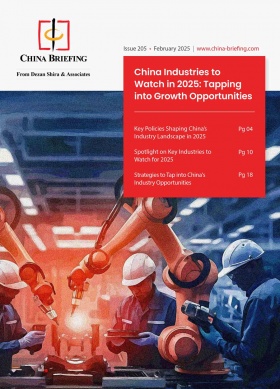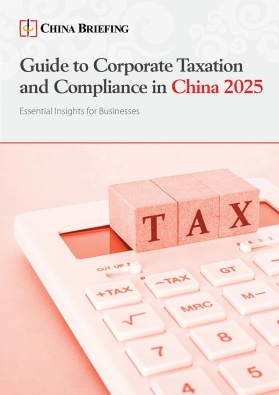Analyzing China’s Average Income: Key Trends and Market Implications
China’s rising average income is reshaping its domestic market. This in-depth analysis of average income data reveals urban-rural divides, high-income cities, and expanding consumption power—essential knowledge for investors seeking growth opportunities in China.
In 2024, China’s national per capita disposable income reached RMB 41,314 (US$5,734), with real income growth recorded across all income groups. The median income rose to RMB 34,707 (US$4,817), while rising household ownership of durable goods, such as automobiles and air conditioners, further reflected improvements in living standards and consumption capacity.
These income gains offer valuable insight for foreign investors, not only into growing consumer demand but also into the broader shifts in labor costs and regional competitiveness. As coastal cities transition toward higher-value services and consumption-driven growth, inland provinces are emerging with lower operational costs and increasing domestic demand, creating a more diversified investment landscape.
Established investment hubs like Shanghai, Beijing, Guangdong, and Zhejiang continue to stand out for their strong purchasing power, innovation ecosystems, and business-friendly environments. Meanwhile, fast-rising locations such as Tianjin and Yiwu demonstrate that income growth and sectoral specialization are expanding beyond China’s tier-one cities, opening new opportunities for foreign enterprises to tap into regional markets.
Key indicators of China’s average income
Per capita disposable income
The National Bureau of Statistics (NBS) publishes official data on China’s per capita household income annually, based on large household surveys. Among the various indicators, per capita disposable income is the most critical for understanding the impact of income on business and investment activity. It shows the average income each person has left to spend or save after paying taxes and social security contributions, offering a clearer picture of real consumer purchasing power.
In Q1 2025, China’s disposable income rose to RMB 12,179 (approx.US$1,690), a 5.5 percent increase in real terms compared to the same period in 2024. For the full year of 2024, it reached a year-on-year increase. China’s nationwide per capita disposable income in 2024 was RMB 41,314 (approx. US$5,800), a 5.1 percent real increase after adjusting for inflation. This followed an upward trend from RMB 39,218 (approx. US$5,443) in 2023, which represented a 6.3 percent nominal increase from the previous year. These figures point to steadily improving income levels and reflect a strengthening macroeconomic environment driven by domestic demand.
It is important to distinguish per capita disposable income from GDP per capita. While GDP per capita calculates the total value of all goods and services produced in a country, divided by the population, it does not reflect the actual income available to individuals. Disposable income per capita, on the other hand, measures the amount of money people can actually use, making it a more meaningful indicator of living standards and spending capacity.
| China’s Per Capita Disposable Income 2023-2025 Q1 | |||
| Time period | Per capita disposable income (RMB) | ||
| National | Rural | Urban | |
| 2023 | 39,218 | 21691 | 51821 |
| 2024 | 41,314 | 23,119 | 54,188 |
| 2025 (Q1) | 12,179 | 7,003 | 15,887 |
Income by quintile
A deeper look into China’s income distribution by household quintile reveals ongoing structural changes. In 2024, the lowest 20 percent of households had a per capita disposable income of RMB 9,542 (US$1,325), while the highest 20 percent reached RMB 98,809 (US$13,723). Although income disparities remain, all five quintiles saw income growth between 2022 and 2024, indicating a steady uplift across income groups:
- The lowest 20 percent saw income rise from RMB 8,601 in 2022 to RMB 9,542 in 2024.
- The second and third quintiles increased by roughly RMB 2,300 and RMB 3,300, respectively.
- The fourth and highest quintiles grew more significantly, reaching RMB 53,359 (US$7,410) and RMB 98,809 (US$13,715), respectively.
When broken down by urban and rural context, in 2024, the lowest 20 percent of urban households earned RMB 18,003 (US$2,499), while the top 20 percent earned RMB 113,763 (US$15,800). In contrast, rural households in the lowest 20 percent earned just RMB 5,410 (US$751), while the top 20 percent earned RMB 53,805 (US$7,473). These figures highlight the rising affluence of high-income households even in rural areas.
This trend reflects the growing spending power in rural China, particularly among the upper-income segments. It suggests strong potential for premium goods, digital services, and lifestyle-enhancing products in emerging county-level and township markets. For foreign and domestic businesses alike, tapping into these fast-evolving rural markets presents a compelling opportunity to diversify their customer base and align with China’s broader push for balanced and inclusive economic growth.
| Per Capita Disposable Income by Quintiles 2024 | ||
| Household Group | Per capita disposable income (RMB) | |
| Highest 20% | Lowest 20% | |
| Nationwide | 98,809 | 9,542 |
| Urban | 113,763 | 18,003 |
| Rural | 53,805 | 5,410 |
Median per capita disposable income
The median per capita disposable income provides insight into how income is distributed across the population. In 2024, the nationwide median was RMB 34,707 (US$4,817), about 84 percent of the average, indicating that income distribution remains skewed toward higher earners. The median also rose from RMB 33,036 (US$4,588) in 2023, highlighting a continued overall rise in income levels.
The gap between the median and average income points to underlying inequality issues, but it also underscores the strong purchasing power of high-income populations concentrated in major cities and economic hubs.
The steady growth in median income reflects the expansion of China’s middle-income group, which is increasingly able to afford more than just basic necessities. For investors, this group represents a stable and scalable market for mid-range consumer goods, education services, personal finance, and lifestyle upgrades, particularly in emerging urban clusters beyond tier-one cities.
Urban vs. rural income
Income disparities between urban and rural areas remain significant, largely due to differences in employment opportunities, industrial activity, public services, and consumption habits. In Q1 2025, urban per capita disposable income reached RMB 15,887 (US$2,205), marking a 4.9 percent year-on-year nominal increase. Rural income, by comparison, stood at RMB 7,003 (US$972) but grew faster, with a 6.2 percent nominal increase.
In 2024, the average annual disposable income of urban residents stood at RMB 54,188 (US$7,522), more than double that of rural residents at RMB 23,119 (US$3,209). Although the absolute income gap remains large, the faster growth in rural income signals gradual convergence. This is partly driven by national policies promoting rural revitalization, increased infrastructure investment in inland provinces, and the strategic relocation of industries to less developed areas.
This rising income in rural and lower-tier urban areas unlocks new consumption potential, offering opportunities for investors looking to tap into emerging domestic markets. As the urban-rural growth gap narrows, labor mobility and cost structures may also shift, making inland cities increasingly attractive for both consumer-facing businesses and operational expansions.
Consumer goods ownership
A further indicator of rising income levels and consumer capability is the increase in household ownership of durable goods. As of 2024, the number of selected durable goods owned per 100 households included:
- Automobiles: 51.2 (up from 43.5 in 2022);
- Electric bicycles: 77.8 (up from 75.5 in 2022);
- Refrigerators: 104.8;
- Air conditioners: 150.6 (up from 133.9 in 2022); and
- Mobile phones: 253.5.
These figures show that, beyond income growth alone, material living standards and consumption infrastructure are improving. Durable goods ownership typically lags behind income gains, rising ownership rates point to enhanced affordability and evolving lifestyle expectations. The steady increase in household items such as air conditioners and refrigerators underscores how basic consumption upgrades are becoming more widely accessible. Even for higher cost goods such as automobiles and computers, ownership is trending upward.
The growing penetration of cars per household, in particular, suggests ample growth potential for the automotive sector, especially in rural and inland urban areas where ownership remains relatively low. In this environment, mid-range and premium vehicles, smart home appliances, and tech-enabled consumer goods are well-positioned for continued expansion.
As lower- and middle-income households transition into higher consumption brackets, demand is shifting toward lifestyle-enhancing and status-signaling products. This trajectory creates expanded opportunities for foreign and joint-venture brands, especially in categories like premium electric vehicles, eco-conscious home devices, and smart digital products.
With China’s domestic market reaching greater maturity, product differentiation, strong after-sales support, and brand recognition will become critical to gaining market share across increasingly segmented consumer demographics.
Why the average income matters to foreign investors
Market potential and consumption power
Rising income levels in China signal a growing domestic consumer market with stronger appeal for foreign investors. With real disposable income continuing to rise in both urban and rural areas, Chinese consumers are gaining more financial flexibility. For instance, China’s per capita disposable income rose to RMB 41,314 (US$5,734) in 2024, a 5.1 percent real increase, and has continued to increase in 2025. This indicates a healthy demand-side environment that supports growth across multiple consumer sectors.
In addition, China’s middle class, now estimated at over 500 million people, is increasingly interested in diversified and higher-quality goods, from electronics and automobiles to leisure and wellness services. This middle-income expansion is particularly concentrated in coastal cities, but inland urban markets are also expanding, creating a broader landscape for foreign consumer brands.
Consumption trends and industry opportunities
As income levels rise, Chinese households are shifting toward upgraded consumption patterns. Beyond the adoption of durable goods, households are spending more on services and lifestyle enhancements such as private healthcare, education services, tourism, and premium food and beverages. According to McKinsey, discretionary spending has grown steadily over the past decade and is projected to remain the main driver of consumption growth through 2030.
Urban consumers, with higher disposable income, show strong demand for imported and branded products, while rural and lower-tier city consumers are increasingly seeking affordable, quality, and aspirational goods. This consumption upgrade is further enabled by digital platforms and e-commerce, which improve accessibility to premium goods. Rising income also boosts consumer confidence, as shown by the growing contribution of consumption to China’s GDP in recent years. This underscores the role of private consumption as a more dependable economic engine.
Labor cost competitiveness
From an operational perspective, rising income levels in China reflect shifting labor cost dynamics. In coastal hubs like Shanghai and Shenzhen, average annual incomes now exceed RMB 75,000 (US$10,410), which is associated with higher minimum wages and a stronger service economy. While this reduces China’s traditional edge in low-cost manufacturing, it also signals a move toward higher-value production. Rising wages are partially offset by gains in labor productivity, as well as by China’s efficient supply chains and advanced logistics systems. In fact, the World Bank ranks China among the global leaders in logistics performance, making operations more cost-effective in the long run despite higher wages.
To manage cost pressures, many foreign companies are relocating or expanding operations to inland provinces such as Henan, Sichuan, and Hunan. In these regions, average incomes remain below RMB 40,000 (US$5,520), but infrastructure and industrial parks are rapidly improving. These locations offer lower operational costs, policy incentives, and access to large domestic markets, while still maintaining proximity to coastal export centers.
Understanding average income trends allows investors to refine location strategies and workforce planning based on market segments and cost-efficiency considerations.
Average income levels in major FDI destinations
China’s major urban centers are magnets for foreign investors. These cities not only attract substantial foreign direct investment (FDI) but also report significantly higher income levels than the national average. The following table shows per capita disposable income for the top FDI destination regions in 2024:
|
Average Income Levels in Major FDI Destinations in China |
|
| Province/city | Per capita disposable income in 2024 (RMB) |
| Guangdong | 51,474 |
| Jiangsu | 55,415 |
| Shanghai | 88,366 |
| Shandong | 42,077 |
| Zhejiang | 67,013 |
| Beijing | 85,415 |
| Tianjin | 53,581 |
Shanghai and Beijing stand out with the highest average incomes in China, each reporting per capita disposable incomes above RMB 85,000 (US$11,798) in 2024. These figures reflect the cities’ concentration of high-income professionals, regional headquarters of multinational corporations, and service-oriented economic structures. As China’s most internationalized urban centers, they offer a mature business environment and advanced infrastructure, making them consistent focal points for foreign investment.
Provinces such as Zhejiang and Jiangsu follow closely behind. These coastal provinces are home to thriving port cities like Ningbo, Hangzhou, and Suzhou, which support robust manufacturing bases, dynamic private sectors, and strong export activity. Their proximity to the Yangtze River Delta, a key economic hub in China, further enhances their strategic importance for foreign businesses. For example, Hangzhou and Ningbo have evolved into e-commerce and advanced manufacturing hubs, while Suzhou remains a top destination for foreign-invested industrial parks and high-tech production.
Guangdong, home to Shenzhen and Guangzhou, maintains robust income performance, driven by its leadership in high-tech innovation, advanced manufacturing, and foreign trade. Located at the heart of the Greater Bay Area and Pearl River Delta, the province benefits from policy support under initiatives such as the Guangdong Free Trade Zone, Qianhai Cooperation Zone, and Hengqin Economic Development Plan. These areas offer preferential tax policies, streamlined business registration, and incentives for research and development (R&D) and cross-border finance. The combination of infrastructure and pro-innovation policies has made Guangdong one of China’s most attractive regions for foreign direct investment.
Smaller affluent cities are increasingly rivaling these megacities in income. For example, Yiwu, a county-level city in Zhejiang known for its global small commodities market, achieved a per capita disposable income of RMB 83,954 (US$11,653) in 2023. This underscores that not only tier-one cities but also specialized urban economies in wealthy coastal provinces are enjoying high income levels and robust demand. Cities like Yiwu, Hangzhou, and Ningbo serve as global trading centers, bringing significant wealth to residents and offering well-developed commercial ecosystems. For foreign investors, these locations present niche opportunities due to their sectoral specialization, export focus, and mature support infrastructure.
Shandong and Tianjin, while not as wealthy as the top-tier coastal hubs, are emerging as attractive regions for companies seeking to expand in northern China. Tianjin, part of the coordinated Beijing-Tianjin-Hebei regional development strategy, benefits from its strategic proximity to Beijing and its status as a major port city. It offers advanced logistics services, access to international shipping routes, and growing connections to inland markets. Recent policy measures to improve integration within the 京津冀 region, including infrastructure upgrades and industrial relocation schemes, are further strengthening Tianjin’s appeal as a regional investment destination.
Conclusion
China’s income landscape is becoming increasingly complex, but also rich with opportunity. As disposable incomes rise across both urban and rural areas and the middle class continues to grow, foreign investors are entering a more nuanced market, one that rewards targeted, value-driven strategies over broad-stroke approaches.
The ongoing shift from low-cost manufacturing to higher-value consumption and services is transforming regional competitiveness. Established FDI hubs like Shanghai and Shenzhen offer mature, innovation-driven business environments, while inland and lower-tier cities are emerging as promising growth frontiers, supported by improving infrastructure, cost advantages, and untapped consumer segments.
For foreign businesses, success in China’s dynamic economy will depend on aligning with these evolving income patterns, whether by capturing premium demand in megacities or scaling operations in specialized, high-potential regional markets.
About Us
China Briefing is one of five regional Asia Briefing publications, supported by Dezan Shira & Associates. For a complimentary subscription to China Briefing’s content products, please click here.
Dezan Shira & Associates assists foreign investors into China and has done so since 1992 through offices in Beijing, Tianjin, Dalian, Qingdao, Shanghai, Hangzhou, Ningbo, Suzhou, Guangzhou, Haikou, Zhongshan, Shenzhen, and Hong Kong. We also have offices in Vietnam, Indonesia, Singapore, United States, Germany, Italy, India, and Dubai (UAE) and partner firms assisting foreign investors in The Philippines, Malaysia, Thailand, Bangladesh, and Australia. For assistance in China, please contact the firm at china@dezshira.com or visit our website at www.dezshira.com.
- Previous Article Tracking China’s Carbon Goals: How Far Has It Come in 2025?
- Next Article








